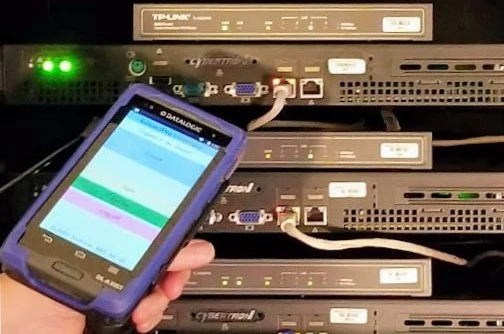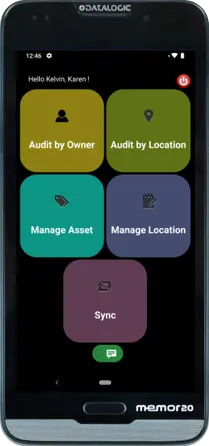Fixed Assets:
How to manage them from receipt to disposal
SageData is based in Ottawa, Ontario, Canada
Definition
Fixed Assets are often crucial to the operation of an enterprise, and can be expensive to
replace if lost or misplaced. Asset management systems enable an accurate inventory to be maintained, and
for all movements and temporary loans to be recorded. Items are managed from the point of receipt, through
audits, and eventually to disposal.  These are usually identified with a
UIC
(Unique Identification Code), which in most cases is encoded either in barcode format on an asset
identification label, or by means of an RFID tag. Handheld computers with integrated barcode readers are
used to perform audits, or to track movement of items. The systems generally include detailed reporting
functionality, and can exchange information with back end systems, such as SAP or Oracle.
These are usually identified with a
UIC
(Unique Identification Code), which in most cases is encoded either in barcode format on an asset
identification label, or by means of an RFID tag. Handheld computers with integrated barcode readers are
used to perform audits, or to track movement of items. The systems generally include detailed reporting
functionality, and can exchange information with back end systems, such as SAP or Oracle.
What can be tracked?
These systems are used to track a wide variety of items - anything physical, that has value, that is operationaly important, or which has security implications.

IT Asset Management is a very common application, particularly within larger organisations,
such as the Federal Government.
Some organizations use an asset management system to track all IT equipment in the, managing these items
from receipt through deployment, redeployment and maintenance (scheduled and unscheduled), through to
return at end of lease.
Critical Equipment in a manufacturing environment can be tracked for calibration purposes, or for
production planning.
Secure documents can be tracked in transit or when issued and returned to a secure storage location.
Safety Equipment, including fire extinguishers and other fire prevention equipment can be audited and
inspected.
Tools can be tracked as they are issued and returned to a tool crib.
Vehicles, radios and other items issues on a shift by shift basis can be managed effectively.
Linkages
Many linkages are possible, but most systems rely on linking people, places and things - each asset is identified as being in a specific physical location, and the responsibility of a specific individual.
Receiving
Systems track the original receipt of an item, and a clone function simplifies data entry, which can be done on a desktop or mobile data collector.
Audit

Audits can be completed quickly, easily and accurately. The use of a barcode on the asset
identification label, and a handheld computer (with integrated barcode reader) to read those labels, means
that it takes less than a second to audit each asset.
Because locations can be identified in a similar fashion, mistakes are reduced.
Because all transactions are timestamped, and data entry is automated, (through the use of the barcodes
and scanners), data integrity is high. Users can have a great deal of faith in the accuracy of the final
reports.
Disposal
Disposal is tracked by the system, is fast, and is accurate. Specific notes can be attached, or standard client documentation can be easily integrated into the system.
Maintenance
Maintenance can be tracked by the system, maintaining an accurate historical record. Again, bar codes guarantee accuracy, and guard against abuse. A planned maintenance function enables future activities to be planned.
RFID for Asset Management
This technology offers some distinct advantages in key areas. It is powerful for file tracking. It can be used to track IT equipment, making the audit process far more efficient. And it is a natural solution where large items need to be tracked, especially in an outdoor environment.
Working with your existing systems
Most applications have import and export capabilities so that they can work with your existing systems. From the reliability and maintainability viewpoints, most organizations opt for a standalone system that can exchange information with the existing ERP and accounting systems.
Contact us to discuss your asset management needs.
For further information browse the following pages:
- introduction
to barcode
technology
- RFID technology overview
- BassetPro software introduction
- mobile data collectors / handheld
computers
QAOK5361
